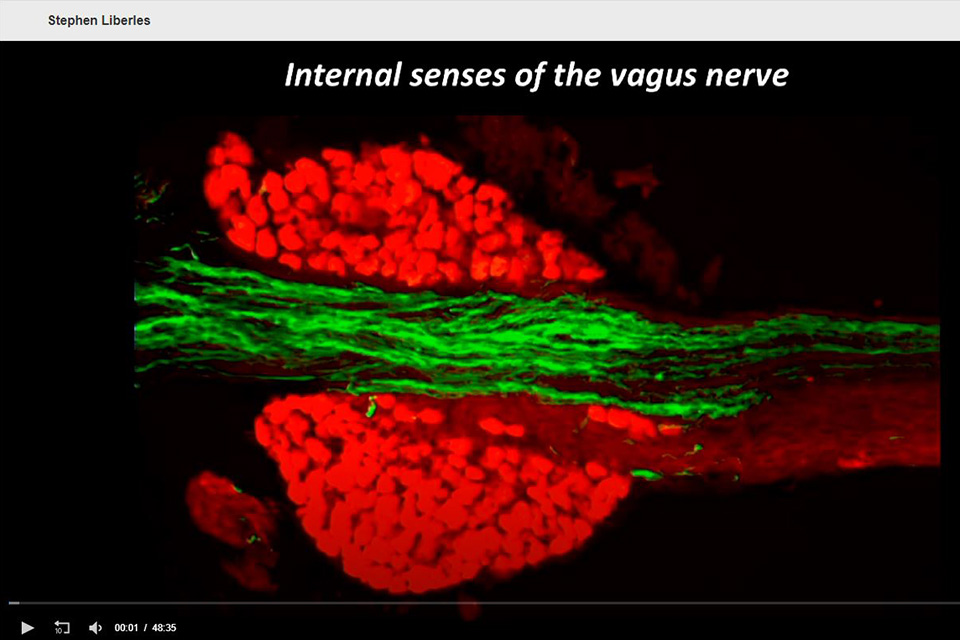Stephen Liberles, PhD
Professor, HHMI Investigator
Department of Cell Biology
Harvard Medical School
(January 14, 2020)
Internal senses of the vagus nerve
In all probability, you have probably not given your vagus nerve much thought. Or perhaps you have experienced a vasovagal response (fainting) thanks to a stimulus such as pain or the sight of blood. But chances are, the true roles of the vagus nerve, such a heart rate, help with digestion, and sweating, are a mystery. Dr. Liberles discussed his work unraveling the mysteries of the vagus nerve. Using a mouse model, his group has identified different subtypes of sensory neurons within the vagus nerve system, each with their own mechanisms and areas of control. This can, in the future, assist in the development of therapies for disorders associated with the vagus nerve.
 The vagus nerve is a major conduit between body and brain that controls autonomic physiology. The vagus nerve contains a diversity of sensory neurons that innervate many internal organs and detect peripheral stimuli such as blood pressure changes at the aortic arch, lung expansion during breathing, meal-induced stomach distension, and chemotherapeutics that induce nausea. Vagal sensory mechanisms are largely unresolved and present tremendously important problems in sensory biology. We used a molecular approach to deconstruct the vagus nerve, identifying novel receptors and classifying principal cell types. We then generated ires-Cre knock-in mice and adapted genetic tools for anatomical mapping, in vivo imaging, and optogenetic control of vagal neuron subtypes. These approaches revealed sensory neurons that innervate the lung and control breathing, and others that innervate the gastrointestinal tract and control digestion. In a collaborative effort, we also identified a critical role for Piezo mechanoreceptors in the detection of airway stretch and neuronal sensation of blood pressure underlying the baroreceptor reflex. Identifying neurons and receptors that control autonomic physiology builds an essential foundation for mechanistic study and therapy design.
The vagus nerve is a major conduit between body and brain that controls autonomic physiology. The vagus nerve contains a diversity of sensory neurons that innervate many internal organs and detect peripheral stimuli such as blood pressure changes at the aortic arch, lung expansion during breathing, meal-induced stomach distension, and chemotherapeutics that induce nausea. Vagal sensory mechanisms are largely unresolved and present tremendously important problems in sensory biology. We used a molecular approach to deconstruct the vagus nerve, identifying novel receptors and classifying principal cell types. We then generated ires-Cre knock-in mice and adapted genetic tools for anatomical mapping, in vivo imaging, and optogenetic control of vagal neuron subtypes. These approaches revealed sensory neurons that innervate the lung and control breathing, and others that innervate the gastrointestinal tract and control digestion. In a collaborative effort, we also identified a critical role for Piezo mechanoreceptors in the detection of airway stretch and neuronal sensation of blood pressure underlying the baroreceptor reflex. Identifying neurons and receptors that control autonomic physiology builds an essential foundation for mechanistic study and therapy design.
